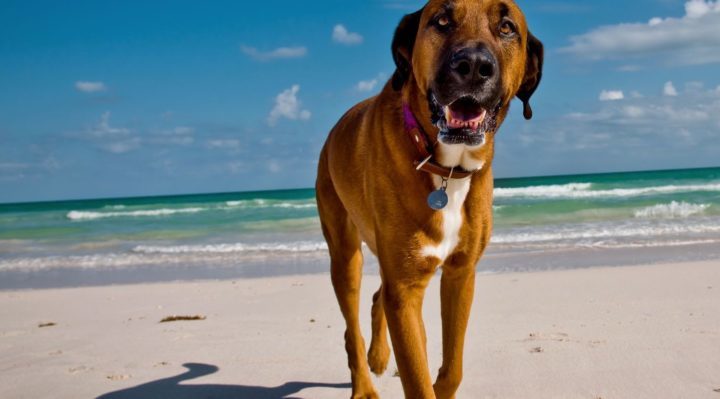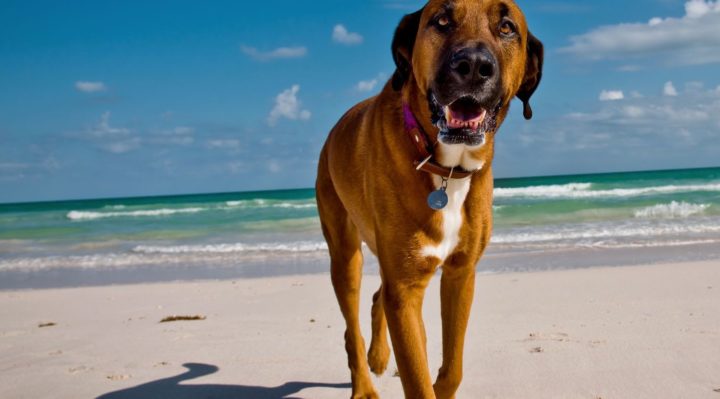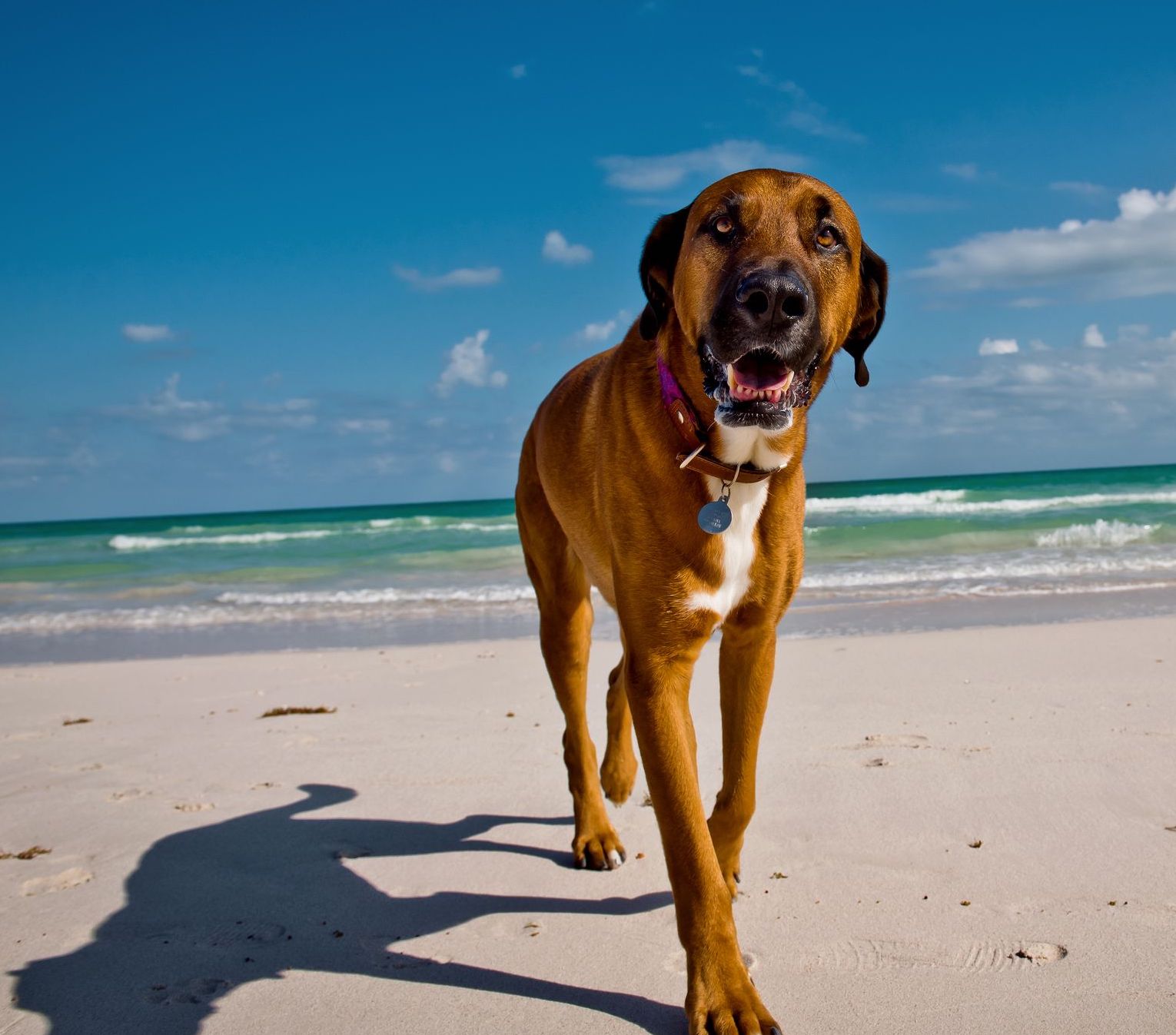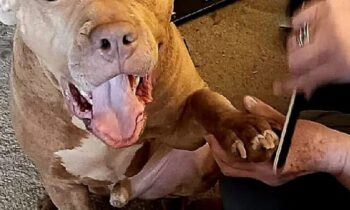

Keeping your dog cool in warm weather was our topic of discussion here last week. Today, we’re going to talk about water inhalation safety and heat stroke prevention especially for dogs.
Thanks to two online friends who offered to share some timely information with us!
Stephanie Presdee (United Kingdom) has outlined these suggestions on water safety for dogs:
When dogs play in hoses and sprinklers, the pressurized flow of the water puts them at risk of inhaling the water. This pressure means that both water and air are pumped through the sprinkler or water sprayer… and your dog is taking in both.
Water from a hose left in the sun can climb to dangerous temperatures during the summertime and can lead to serious burns. A garden hose exposed to direct sunlight during summer can heat the water inside the hose (not flowing) to 130–140 degrees Fahrenheit, which can cause burns especially to children and animals. Let the water flow a few minutes to cool before spraying on people or animals.
Your dog can inhale the water from the hose and potentially develop aspiration pneumonia, a condition caused when water gets into the lungs. If the water contains bacteria, it can spread quickly and cause a serious infection.
In addition to simply running through the sprinkler, most dogs will try to stalk, hunt, and pounce on the water—OCD craziness, particularly with a moving sprinkler or hose. While this is entertaining to watch for some owners, the process of biting and leaping head-on into the spray means that it’s pretty easy for a dog to inhale some of the water.
When dogs are playing in water, look out for:
▪ If your dog coughs, gags or regurgitates water after playing, he may have aspirated some of it.
▪ Watch for signs of troubled or noisy breathing, depression, loss of appetite, and a blue tint to the lips and gums within 24–48 hours after exposure to water.
How to avoid your dog’s aspirating:
▪ Use management to keep your dog from falling into a swimming pool or hot tub. (Our pool was in a different area to the dogs and fenced off.)
▪ Use a life vest on a dog that is just learning to swim or can’t keep his mouth above water.
▪ Dogs will often bite at or drink copious amounts of water until they get the hang of swimming. This is why some well-supervised hydro pools do not allow fetching toys in their pools.
▪ DO NOT allow your dog to lean over and take long drinks out of the swimming pool; the improper posture they must use can cause them to aspirate water.
▪ You can allow your dog to play with hoses, sprinklers, and when watering plants in the evening when it’s cooler, if you introduce cues—Stop or Out or End (stop playing with the hose)—then throwing rewards or another toy elsewhere. “GET IT” means ‘you can now play with the hose.’ Dogs can get to play a game, but with some management and stimulus control.
▪ Manage your dog’s time in the water and give him lots of breaks and settle time.

Photo by Colette Kase
Colette Kase (Mexico) has written a blog about heat stroke prevention for dogs:
I live in Yucatan. Yucatan is hot. It is not hot like normal places. No. Yucatan is hot in a way that is impossible to explain. You have to experience it. No matter how many times someone tells you it is hot in Yucatan, you will not be able to comprehend what that means until you have spent a summer here.
I want to help you to keep your dogs safe and cool. Heat stroke is a thing, a very horrible and serious thing, and it can kill your dog quickly if you do not know how to prevent it or deal with it if it happens. Dogs can also suffer from badly burned paws on the streets if we go out when the thermal temperature is in the 50s. Yes, I said the 50s. And yes, I am talking in Celsius.
Heat stroke and heat exhaustion can happen to humans and animals. The fancy word for it is hyperthermia. The simple definition is that you are too freaking hot. Because dogs do not sweat through their skin like humans do, you have very little time once you have recognized the signs of heat stroke to save your dog’s life. It is that serious.
What happens during heat stroke is, once a dog is no longer able to expel heat from their body, their temperature starts to rise. This can very quickly lead to irreversible organ damage. Before a dog goes into a state of heat stroke, they will have already been suffering from heat exhaustion.
Signs of Heat Stroke
▪ Excessive panting or strained breathing
▪ Disorientation
▪ Dry and dark red or very pale gums
▪ Thick saliva and excessive drooling
▪ Glazed eyes
▪ Trembling
▪ Vomiting
▪ Difficulty urinating or urinating blood
▪ Stumbling or staggering
▪ Unable to stand
▪ Unconsciousness
If you have been out in the hot weather with your dog, or even exercising with them when it is warm outside, any of these signs, especially more than one of them, means you must get your dog to the vet—fast.
For additional information, including how to help a dog that may be suffering from heat stroke if you’re not able to get to a veterinary clinic immediately and, so important, how to prevent heat stroke so that it does not threaten your dog at all, here’s a link to Colette’s blog on this topic:
How To Have The Coolest Dog In Yucatan: Preventing Heat Stroke In Dogs



